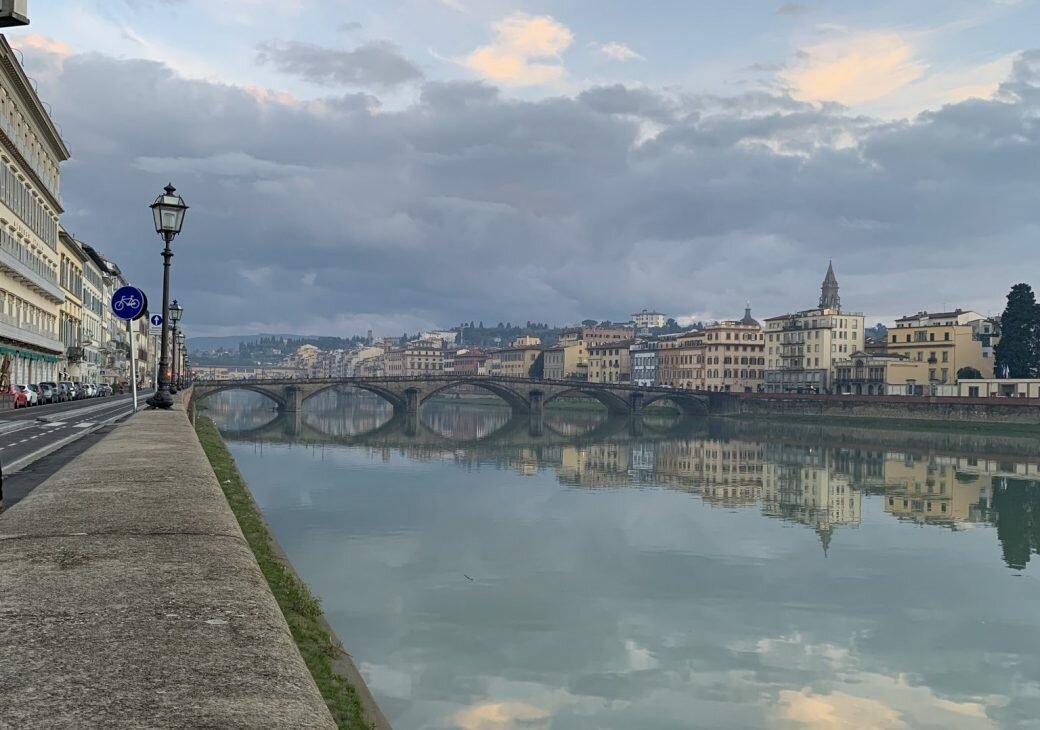The three faces of Florence
As it happens, there are probably three Florences. The first is that of the old historic centre. While this continues to stand proud as a repository for everything that is the Renaissance, shopkeepers often treat it as an open-face mine to be shamelessly worked in order to reap the fruits of the mass tourism which flocks there.
However, many locals have by now discarded it as a viable place to live. Draconian traffic restrictions and rising prices have become a real deterrent, as well as the awareness that the centre is increasingly resembling a kind of Disneyland, although not everyone would agree with this view. Not surprisingly for a Renaissance city with an impossibly small centre, modern buildings are confined to the suburbs. The ex-Fiat quarter of Novoli is home to the new university campus and the futuristic law courts building.
The second Florence is la Firenze delle colline, meaning the magical hills that ring, and in some cases help form the city. Despite the rampant urban development down below, these lofty upper reaches remain a loyal tribute to the Renaissance vision of rus in urbe, meaning the importing of a little bit of countryside into the city. Miraculously, delightful villages and hills such as Fiesole and Settignano, with their magnificent villas and lines of cypresses, their convents and castles, are still practically untouched.
The third Florence began in the 1860s when the city was redeveloped as the new, albeit temporary, capital of Italy. The old walls were mostly demolished to make way for the city’s inner ring road of broad avenues, and new residential neighbourhoods were created away from the small centre. Today’s urban sprawl, which is in effect a continuation of this development, features ambitious projects meant to renew areas of degradation and carrying internationally known architectural names. While they may seem exciting to some, auguring well for Florence as a city of the future, the projects also raise important questions about how they will affect what, in the past, has been one of the world’s great aesthetic capitals.
The Florentines
Figures show that in demographic terms Florence is changing rapidly. At the turn of the 20th century, this was a residential city of prudent rentiers, merchants and minor craftsmen, and where as late as the post-war period there ruled a rigid class system made up of landed borghesia and poor contadini. Today, Florence is deeply middle-class, despite its left-wing council. The city operates a craft-and-services economy, with industry restricted to the outskirts.
Rampant commercialisation had been kept in check by a sophisticated if provincial culture, and an abiding belief in good education, the family and the good life, although it now seems to be gaining the upper hand. Figures, meanwhile, show that to maintain their old principles, denizens are now fast abandoning the metropolis for smaller centres. Taking their place in town now are the extracommunitari, or Third World immigrants.
As in the rest of Italy, immigration is a controversial topic. Tuscany is a centre-left strong-hold, but even here, in the 2010 regional elections, the anti-immigration Northern League party saw its support increase fourfold since the previous regional elections in 2005. Some 10 percent of the city’s population are now foreigners, and the employment needs of immigrants are a major political issue. Meanwhile the number of native Florentines, in line with Italy’s famously negative birth rate, continues to drop – while the average age continues to rise. The over-65s now account for over a quarter of the population.

